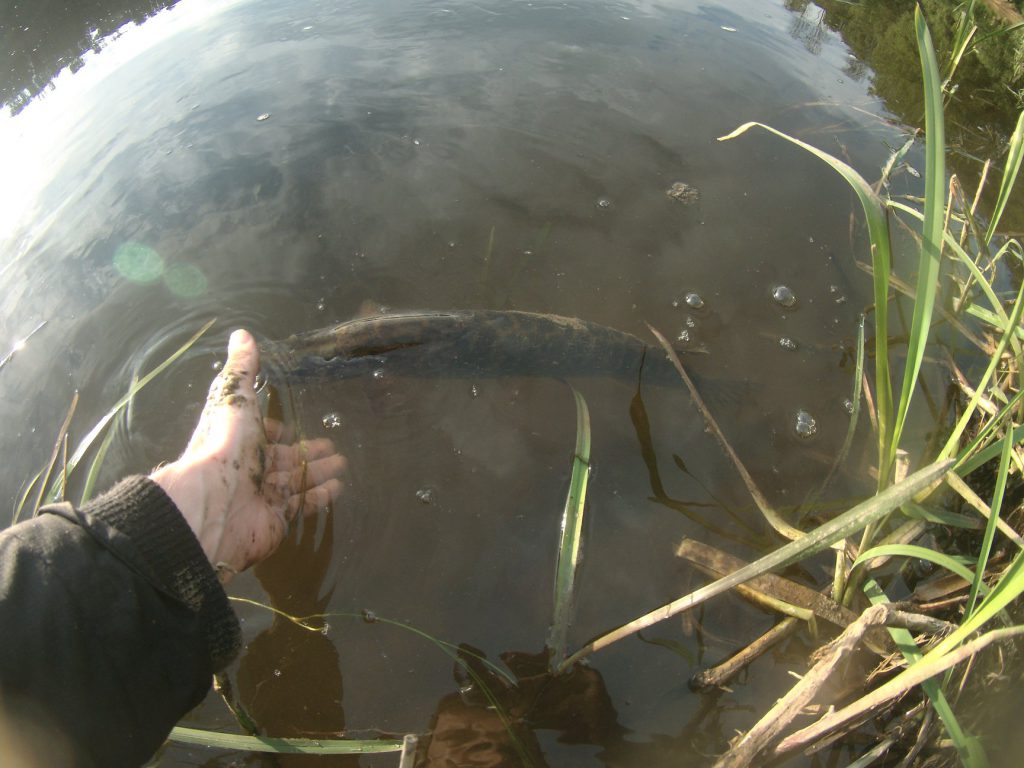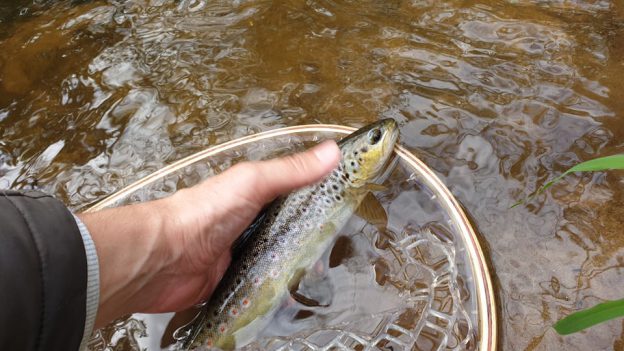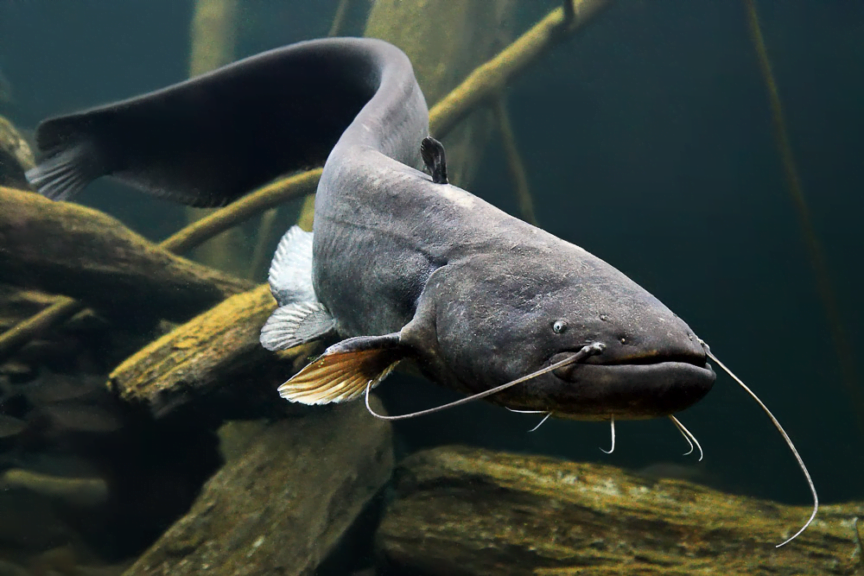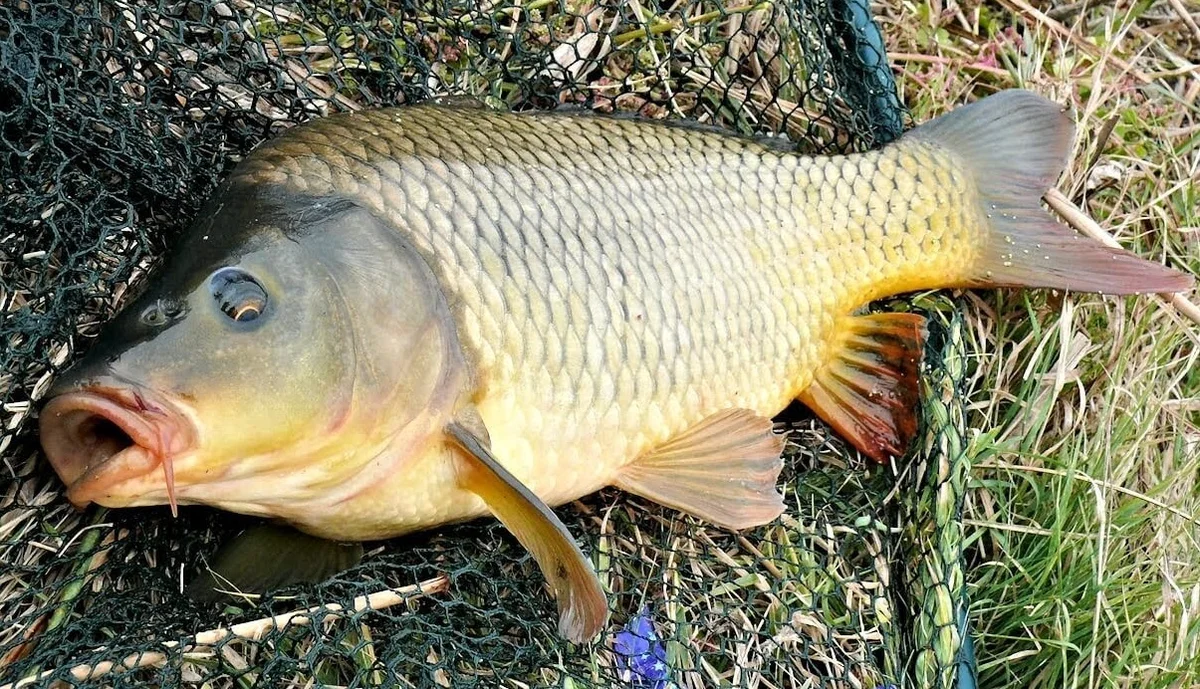In order to catch one or another fish, you first need to know it. After finding out where the pike lives, how and what it eats, in which parts of the lake it is kept and what kind of terrain it prefers, you will immediately be able to exclude a large part of the lake where it is not worth fishing if your goal is pike. That's where I'll start.
The back is greenish gray, the sides are grayish green. The belly is bright. The sides are spotted, often the spots on the body form transverse bands. This concealing color helps to camouflage. Pike can be gray-green, gray-brown, gray-yellow - this is determined by the living environment.
The head is long and flat from above. Scales are elongated. Lateral line almost straight, continuous or dotted. The elongated body and fins located in certain places allow the pike to suddenly attack the prey. The European pike has up to 700 very sharp teeth. Jaws with sharp teeth of various sizes inclined towards the pharynx. Teeth are also present on the palate, tongue, and gill arches. The teeth of the upper jaw are tilted back to prevent the prey from slipping. The teeth of the lower jaw are larger and grow vertically, which can grow up to 2.5 cm in length.
Interesting fact! You can tell the female from the male by the shape of the genital opening: in males, the opening looks like a narrow elongated slit, while in females, this opening begins with an oval-shaped pink depression.
Pike: Diet and hunting
Predator pike almost always hungry. It mostly feeds on carp fish. Large pike, contrary to what is believed, usually catch low-value fish, only sometimes feasting on the fry of valuable fish. Sometimes you are lucky enough to catch a small bird or its young. There is a known case where a pike caught a swallow. The major part of the food ration consists of bream, roaches, will cry. Does not refuse frogs, small aquatic mammals.
The pike has excellent vision. It is sometimes called the "freshwater shark" because of its ability to ambush. Does not like to hunt in open areas. They lie motionless in the undergrowth until they pounce on a passing fish. Their constantly moving throat fins, swim bladder, and unpaired fins help them stay stationary for long periods of time.
The pike itself has almost no enemies. Pike are very predatory and cannibalism is common among them - when adult individuals often attack their younger relatives. Digestive juices released in the stomach can dissolve even metal. A pike with wide open jaws can swallow even a very large fish. Her esophagus becomes very distended as she swallows. Large prey is digested for a long time, sometimes even 3-5 days.
How a pike spawns
In the wild, females are ready to lay eggs in their fourth year of life, and males in their fifth year of life. When the water temperature rises to +5 degrees, it is a signal that the pike should go to spawn. This usually happens when the ice melts. In other words, pike spawn earlier than other types of fish. When fry of other fish are born, pike are already grown enough to feed on them. Due to this feature, there are never any problems with food for small pike.
The predator spawns on the coast at a depth of 0.5-1 meters. During the spawning period, the pike goes into shallow water and spawns quite noisily. Small individuals spawn first, followed by trophy specimens. The spawning period falls on the overflow, when the rivers overflow their banks. At the same time, the meadows are flooded, the water in these places warms up quickly. Basically, pike go to such places, realizing that here the eggs will ripen much faster.
The female goes to spawn surrounded by 3 or 5 males who follow her, but at the same time they are half the size of the female. When moving, the males cling to the female both from the sides and from the back, so during this period you can see how the upper part of the fish's body looks like from the water, together with the fins.
When the female spawns, she rubs against the roots, bushes and stems of aquatic vegetation and other objects. At the end of the spawning process, females can jump high out of the water.
Interesting fact! Depending on weather conditions, the fry hatch from the eggs after 1 or 2 weeks. At first, pike fry are fed with small crustaceans, after a while they start feeding on fry of other fish.
Depending on the size of the predator, the female can lay from 17 to 200 thousand eggs about 3 mm in size. The eggs are slightly sticky and detach from the vegetation after a couple of days. For this reason, their further development takes place at the bottom of the tank. If the water level falls rapidly, it causes a mass death of the eggs. This is especially true for reservoirs where the water level is unstable and artificially regulated.
Pike for commercial purposes
Pike is actively grown in artificial conditions, as it is considered the most useful dietary product. Pike meat contains a lot of protein and only 1-3 percent of fat, apart from other useful components that are easily absorbed by the human body. This is common with any seafood, so fish must be included in the human diet. Thanks to fish, a person is able to maintain nutrients that directly affect human health. Therefore, pike is quite a popular commercial fish. In addition, the predator is actively bred in ponds and is the object of both amateur and sport fishing.
Nowadays, pike are quite actively caught by amateur fishermen, using the most modern ones for this fishing gear. This became possible thanks to the modern industry that produces unique artificial baits for pike, and reliable and durable fishing rods. Pike fishing has become so popular that the status of pike may soon change to "Vulnerable Species" if fishermen do not protect fish stocks.
Recently, there has been an increase in the number of fans of predatory fishing, and, oddly enough, everyone is aiming to catch a pike. And this is because the number of people with motorboats has increased. Sometimes fishing costs more than buying fish in a store, but this does not stop people, because fishing is quite an interesting activity. Everyone wants to spend the weekend for their own good, to recharge their batteries. This is typical of our times, because the daily hustle and bustle takes a lot of strength, both physical and psychological.
Some fishing enthusiasts choose paid ponds, because here the catch is guaranteed. This is a good sign because fish are raised in such ponds and the catch is controlled.
How to fish pike
Spinning is the "youngest" but most popular pike fishing method. It is a fairly modest length rod that has a spinning reel with a main line to which an artificial lure is attached via a leash. The bait is selected taking into account the characteristics of the fishing rod and fishing conditions. One of the essential factors is the type of fishing: twitching, jigging, trolling, etc. It is easiest to fish with a jig, because silicone bait (especially with an attractant) attracts pike even during the passive period.
Pike for fishing used by all types of baits, but their effectiveness depends on the season and the conditions of a specific pool. They can be used both from shore and from a boat. The only exception is trolling, which is only possible from a boat. In most cases, shorter rods are chosen for fishing from a boat, since the casting distance is not so important in this case.
Spinning is productive in all open water seasons, but the nuances of spawning restrictions must be considered. When making casts, you need to take into account the nuances of the bottom relief and the degree of activity of the predator. In case of poor visibility due to cloudy water, it is recommended to use bright baits.





